What is Iron pickup Coffee? introduction to the taste characteristics of iron pickup fine coffee beans in Yunnan Province
In the must-read "Fine Coffee Science" for coffee lovers, it has been emphasized that the three elements of fine coffee are defined as variety, altitude and treatment. One of the varieties, refers to Arabica, such as bourbon, tin pickup.
Speaking of coffee, what impressed many friends most about coffee should be the Blue Mountain Coffee in Hong Kong dramas in the 1980s and 1990s. When I was a child, I watched adults just take a sip of coffee, and the appearance of satisfaction and enjoyment was deeply engraved on my mind. Until after growing up to taste this "really fragrant" taste, it will be out of control. From drinking only foreign beans at the beginning, it has now strongly supported the boutique coffee in Yunnan, China. Along the way, I really didn't even think about it.
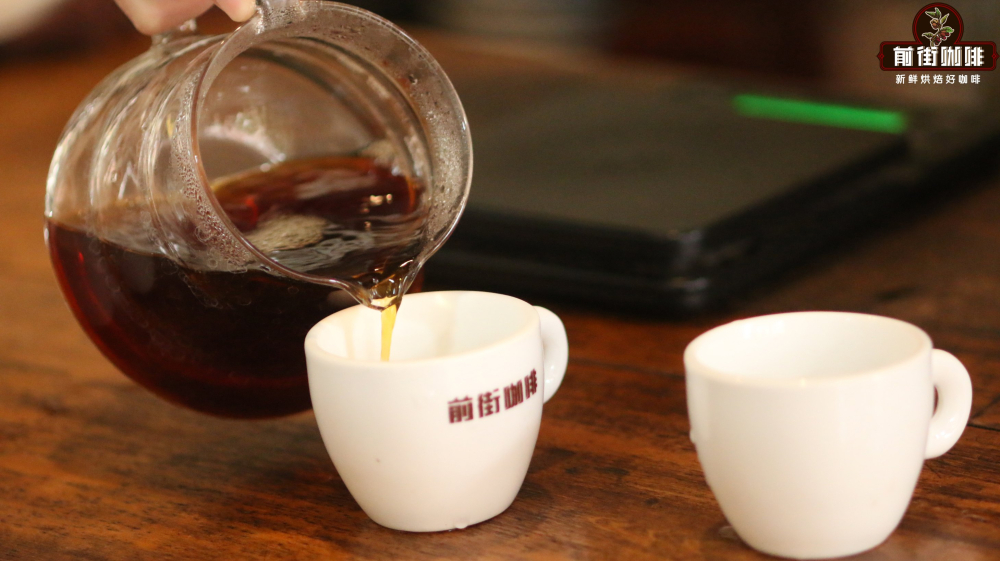
Today's Yunnan coffee has been brilliant on the international stage, and all the Chinese people are impressed by it. Today, Qianjie will introduce to you the well-known growing area of small-grain coffee in Yunnan.
As the national promotion of Yunnan small-grain coffee has spread to all parts of the country, more and more words from Yunnan producing areas have emerged in front of Chinese people. People now know that there is not only tea but also coffee in Pu'er City in Yunnan Province. Small grains of coffee in Baoshan are also sold overseas and have even received a lot of recognition.
Coffee producing area
Of course, Yunnan Province is rich in forest resources, fertile soil, abundant rainfall, complex topography, slightly higher altitude, and mild temperature throughout the year, which is located near the Tropic of Cancer. Yunnan is a rare feng shui place for growing coffee in China. The coffee producing areas in Yunnan Province are not only the well-known Pu'er and Baoshan, but also Dehong and Lincang. However, the taste of Yunnan small-grain coffee in each producing area is also slightly different.
[pu'er]
Pu'er City is divided into: Simao, Ninger, Mojiang, Jinggu, Jingdong, Zhenyuan, Jiangcheng, Lancang, Menglian, Ximeng and other 9 counties and districts to grow Yunnan small-grain coffee. The average annual temperature is between 17 and 20 degrees Celsius, and the altitude is between 700m and 1600 m.
[Baoshan]
Baoshan City has: Longyang, Longling, Shidian, Changning, Tengchong and other five counties with Baoshan small grain coffee geographical indication products. It is planted at an altitude of 1000 to 1500 meters, with an average annual temperature of 21 degrees Celsius. Lujiang coffee from Baoshan was rated as first class in the London market at the end of 1950s.
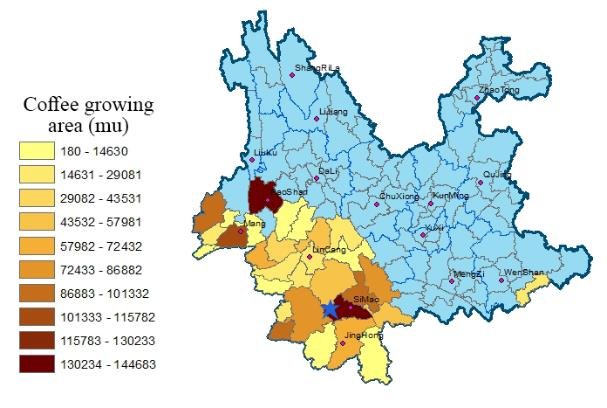
[Dehong]
Dehong producing area is one of the earliest areas in China to introduce coffee. Small-grain coffee was introduced from Myanmar in 1914 until it was commercially grown on a large scale in 1953. The average annual temperature in Lincang is between 18 degrees Celsius and 20 degrees Celsius, with no severe cold in winter, no heat in summer, large temperature difference between day and night, fertile soil and abundant Rain Water. When the coffee fruit is still in the ripening stage, such conditions are conducive to the formation of protein, sugar, caffeine and other substances, making Dehong coffee full of flavor.
[Lincang]
Coffee has been planted in Gengma, Zhenkang, Yunxian, Cangyuan, Yongde and other towns in Lincang City. Lincang has a unique geographical location, bordering Myanmar to the west; the climate here is very superior, with a significant temperature difference between day and night, abundant rainfall and mild annual temperature, Lincang has become the focus of many coffee enterprises. Qianjie Coffee saw the potential of Lincang and set up its own coffee plantation in this producing area.
Coffee variety
Today, most of the varieties of Yunnan coffee beans that you can see on the market are Katim varieties. In fact, the earlier Yunnan coffee bean variety is not Katim, but the oldest and most primitive variety in the Arabica branch line-iron pickup.
With the development of national reform and opening up, some international coffee brands such as Nestle and Starbucks regard Yunnan as one of their raw materials. In order to get large quantities of raw materials in a producing area, Katim coffee varieties were promoted. Because of the Robusta gene, Katim is not only more resistant to coffee leaf rust than tin pickup, but also produces as much as three times as much as iron pickup.
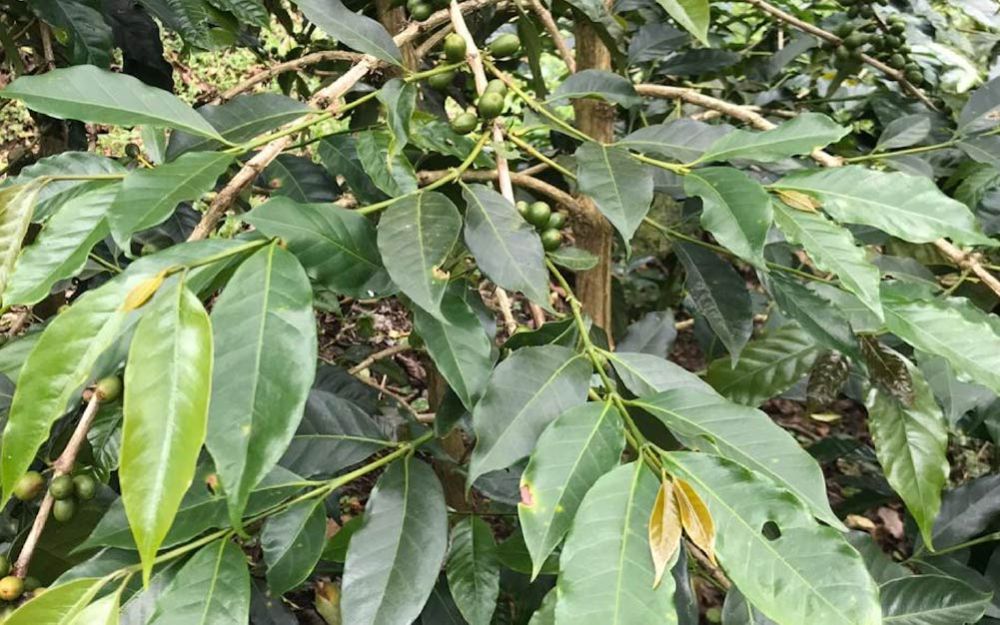
Having higher production capacity means higher returns. Many local farmers in Yunnan do not know the variety and flavor of coffee. What they are worried about is revenue, so they cut down the elegant tin card and plant Katim with higher production capacity and inferior flavor.
Since mixing the Robusta gene can bring so many benefits, it will also bring disadvantages because of the Robusta gene. Robusta's coffee beans generally have a bitter taste. The Katim variety has part of the Robusta gene, and because of this, the Katim variety has a "devil-like tail rhyme".
Qianjie Coffee Manor
It has been 10 years since Qianjie roasted coffee, and we got involved in coffee cultivation half a year earlier than roasted beans. "Big Town Coffee", as the predecessor of Qianjie, wanted to grow coffee in a place called Dazhen in Guangdong. Only after Katim grew out 20 centimeters of seedlings did we understand the relationship and order among the variety, altitude and handling of fine coffee. As a result, Qianjie gave up the planting plan in Guangdong and went to Yunnan to study coffee cultivation in depth. By coincidence, he found suitable land for planting.
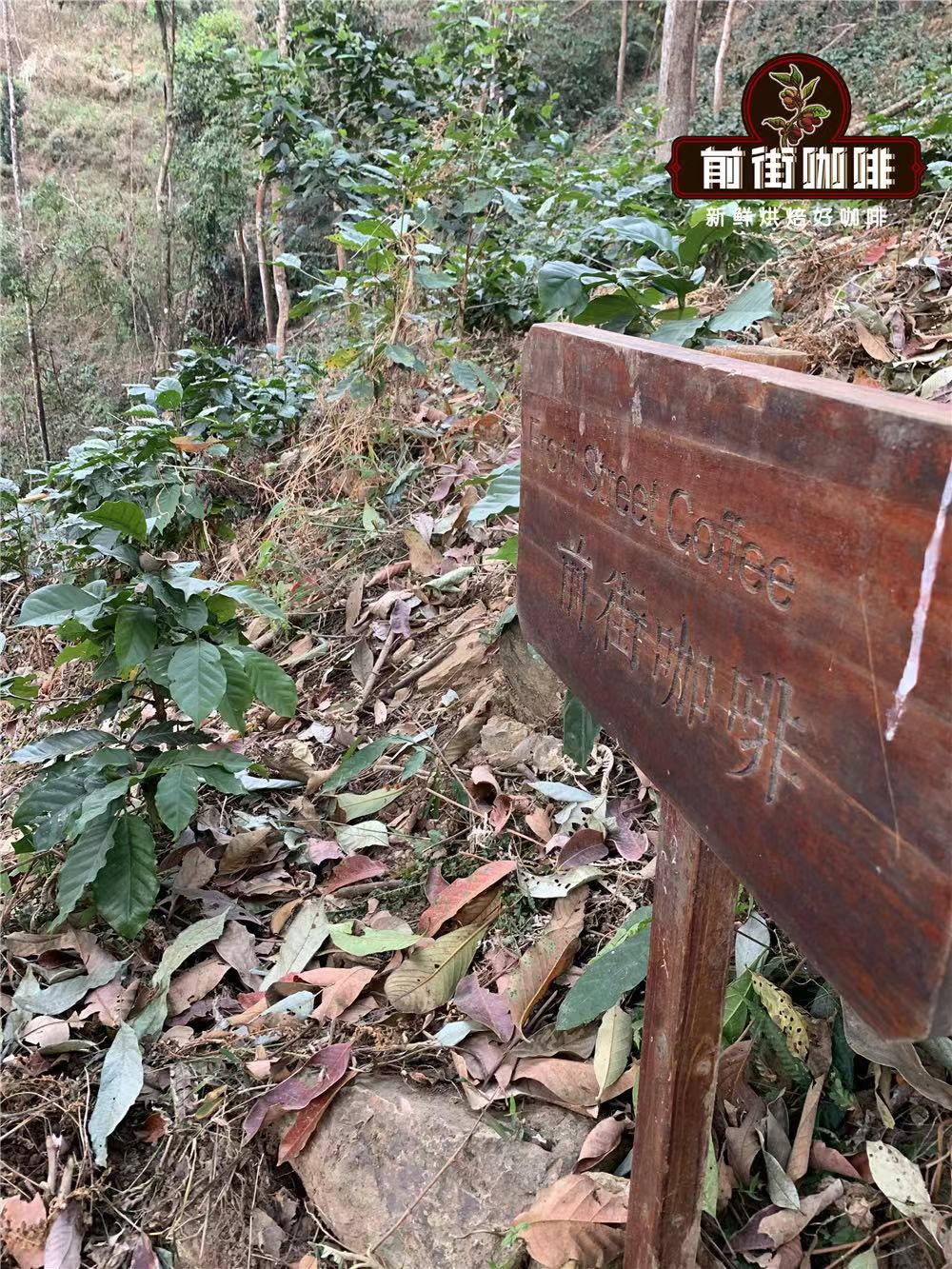
At that time, Qianjie chose the most difficult road: choose highland, breed Arabica, and plant reasonably.
Yunnan is not a place with four distinct seasons, there are only dry season and rainy season. In terms of planting, Qianjie has adopted extremely high standards to provide a natural and comfortable living environment for coffee trees. Because Ironhide Kabi Katim is more difficult in field management and sensitive to long hours of sunlight, Qianjie maintains the diversity of plant species and ecological environment in the manor.
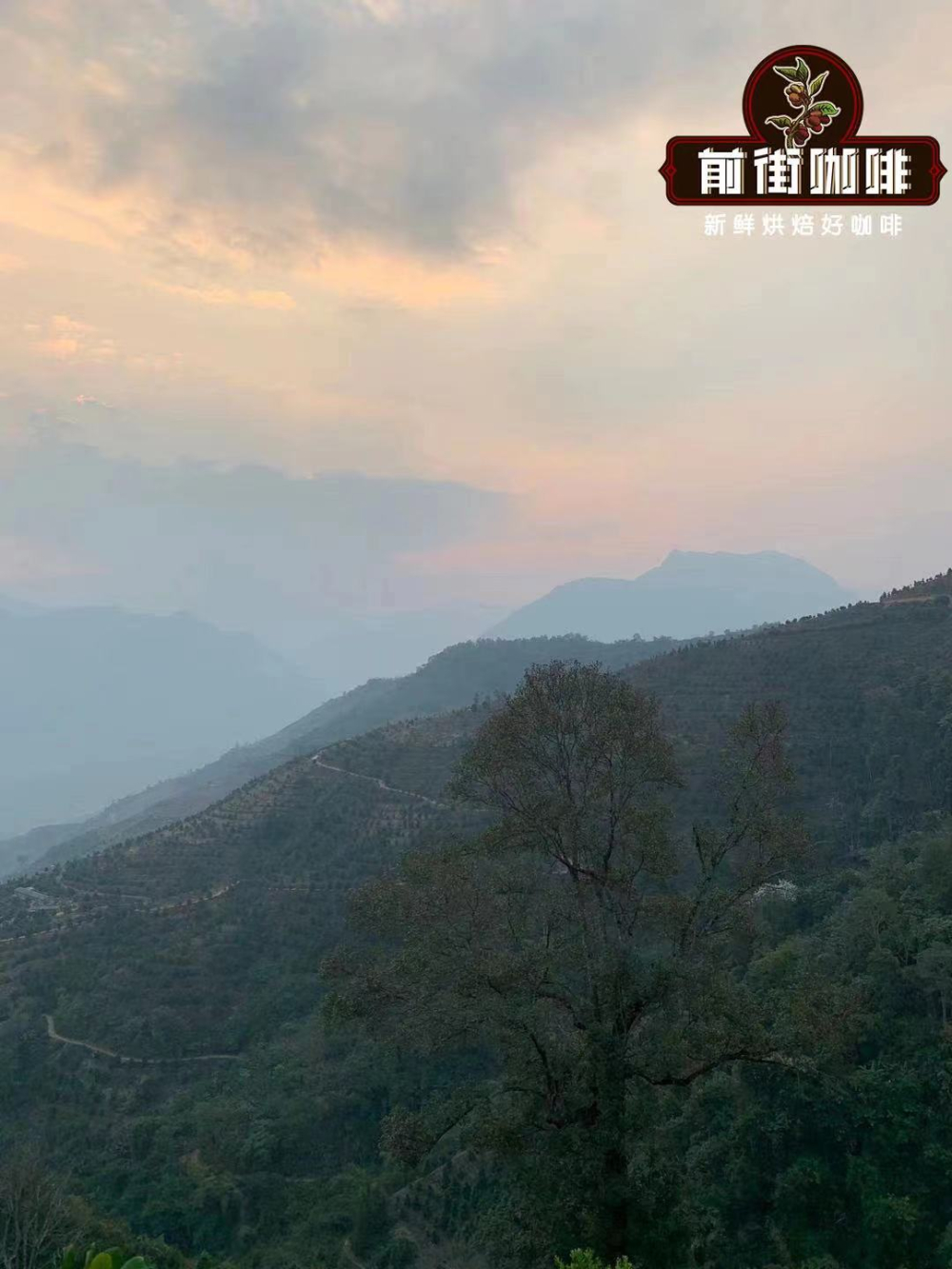
It takes at least three or four years from seedling to harvest. Now, Qianjie Coffee Manor ushered in the second coffee season. All I have done is to get a sentence from the coffee glutton: this is the taste of Yunnan boutique coffee.
The latest batch of coffee beans in Qianjie adopts the most traditional and primitive post-processing method of raw coffee beans, that is, sun treatment. Spread the whole ripe and complete coffee red cherry evenly on the sun bed for sun drying. Due to the preservation of the complete peel and pulp layer, the drying process is more complex and takes longer. In order to avoid excessive fermentation, staff are required to turn over each coffee red cherry on time and frequently.
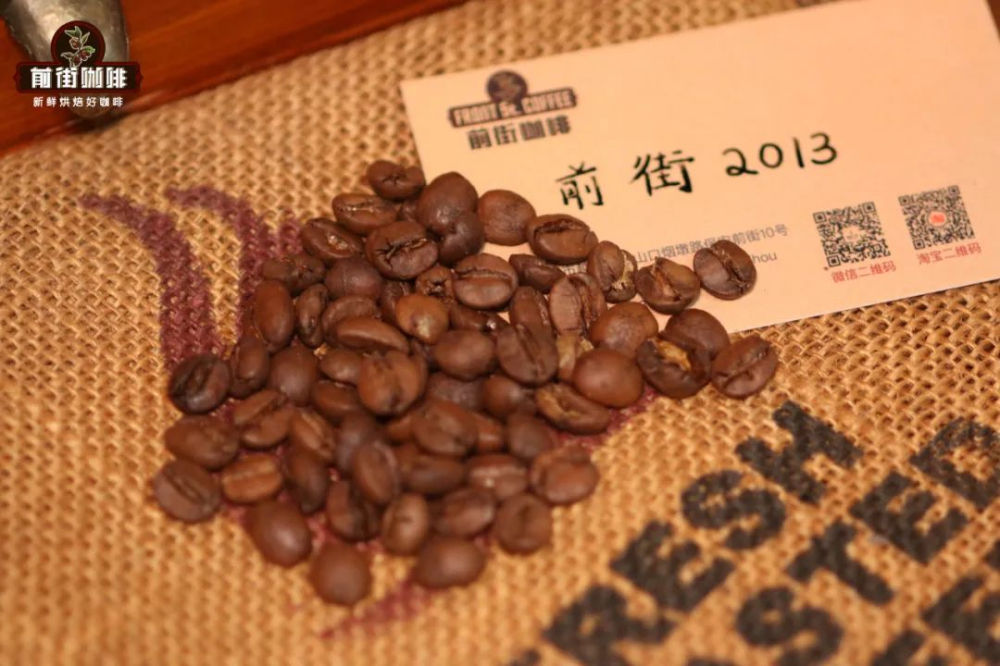
Qianjie Coffee, Qianjie Coffee Manor Yunnan Sun Iron pickup
Origin: Lincang, Yunnan
Manor: Qianjie Coffee Manor
Altitude: 1300 m
Variety: iron pickup
Treatment method: solarization treatment
Due to the use of Japanese treatment, this tanning iron pickup in Qianjie has a very strong aroma and outstanding sweetness, with preserved fruit-like sweetness, soft plum acid, rich nutty notes, and a sweet brown sugar and black tea finish. When buying this coffee bean in Qianjie, many friends will ask the barista in Qianjie how to cook it to give full play to its taste. The front street sun tin card fragrance but not strong, strong but not bitter, with the traditional Yunnan small-grain coffee taste.
If you want to drink the best flavor of this Yunnan coffee bean, Qianjie recommends using freshly roasted coffee beans for brewing, so that you can maximize the rich flavor of the coffee. The coffee beans shipped in Qianjie are all roasted within 5 days, because Qianjie is well aware that the freshness of coffee beans has a great impact on the flavor. The purpose of Qianjie roasting is "freshly roasted coffee", so that every guest who places an order is the freshest coffee when he receives it. The bean cultivation period of coffee is about 4-7 days, so when the guest gets it, it is the time when the flavor is the best.
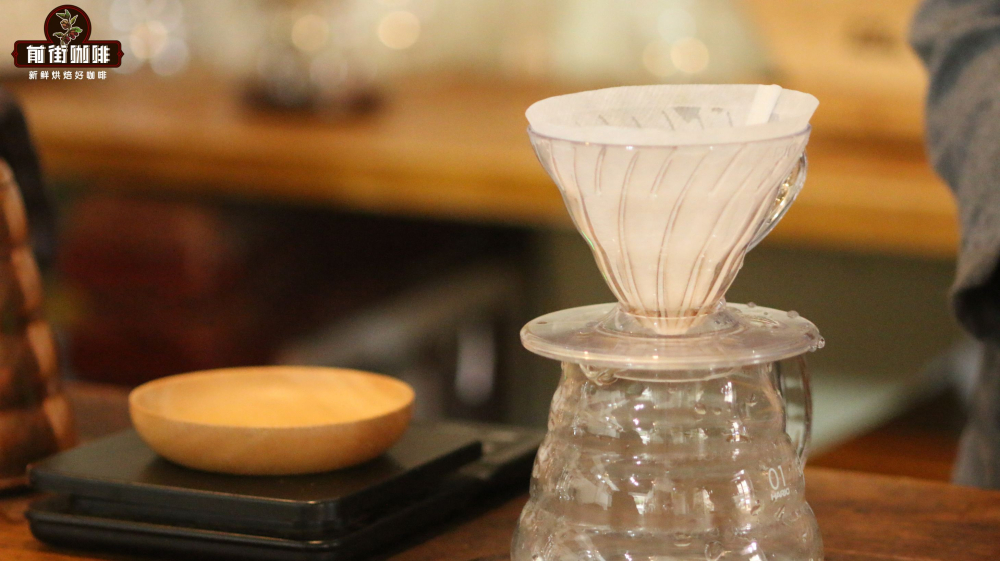
Filter cup: Hario V60
Water temperature: 90 degrees Celsius
Amount of powder: 15g
Ratio of powder to water: 1:15
Grinding degree: 75% of the pass rate of Chinese standard No. 20 screen
Steam 30 grams of water for 30 seconds, inject fine water from the central point and slowly circle to 125 grams, drop the water level in the filter cup to about to expose the powder bed and continue to inject water around 225 grams, the total extraction time is about 2 minutes.

There are also friends who have no confidence in the grinding equipment in their home after seeing the grinding equipment in Qianjie coffee store, so they want Qianjie to grind powder instead. Of course, Qianjie provides this service both online and offline, but after the coffee beans are ground into powder, the exhaust activity is more intense and the flavor dissipates faster, so the flavor is better.
For more information about coffee beans, please follow the coffee workshop (Wechat official account cafe_style) and exchange professional coffee knowledge. Please add Wechat account kaixinguoguo0925.
Important Notice :
前街咖啡 FrontStreet Coffee has moved to new addredd:
FrontStreet Coffee Address: 315,Donghua East Road,GuangZhou
Tel:020 38364473
- Prev

Introduction to the taste and flavor of Tieka coffee
Professional coffee knowledge exchange more coffee bean information please follow the coffee workshop (Wechat official account cafe_style) front street-iron pickup coffee taste description iron pickup card is actually a sub-variety of Arabica coffee, iron pickup is also an ancient variety of coffee, but also one of the original species of coffee. The story about the iron pickup comes from Sudan.
- Next
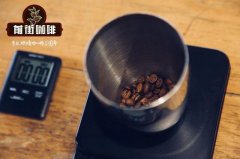
Characteristics of Yega Chefe Coffee beans in Ethiopian Coffee Bean producing area
Professional coffee knowledge exchange more coffee bean information please follow the coffee workshop (Wechat official account cafe_style) front street-Ethiopian coffee taste introduces the world-famous coffee beans, Yega Xuefei coffee beans. The definition of Yejasuefi was originally made from coffee beans produced in the town of Yegashefi in Ethiopia. For Ethiopia, imagine most of it.
Related
- Beginners will see the "Coffee pull flower" guide!
- What is the difference between ice blog purified milk and ordinary milk coffee?
- Why is the Philippines the largest producer of crops in Liberia?
- For coffee extraction, should the fine powder be retained?
- How does extracted espresso fill pressed powder? How much strength does it take to press the powder?
- How to make jasmine cold extract coffee? Is the jasmine + latte good?
- Will this little toy really make the coffee taste better? How does Lily Drip affect coffee extraction?
- Will the action of slapping the filter cup also affect coffee extraction?
- What's the difference between powder-to-water ratio and powder-to-liquid ratio?
- What is the Ethiopian local species? What does it have to do with Heirloom native species?

